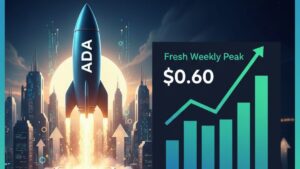The use of two hardforks to upgrade the Cardano (ADA) ecosystem from one code base that is the Byron era to the Shelley era has created a buzz in the crypto space. However, the team handling the transition has come out and furnished the public with reasons as to why two hardforks where needed to implement the new codebase fully. Upgrading of the code base enabled implementation of the platform’s version 1.5.
Cardano´s Developer Reasons
First and foremost, the developer started by saying the latest hardfork was a non-disruptive hardfork which was implemented with the platform still working to its full capacity. Further on, they said to achieve a full node requirement, a single hardfork was needed because the two eras use different Ouroboros. The latter is what put in place the rules of implementation both before and after the hardfork. Ouroboros Classic is in use in the Bayron era while Ouroboros Genesis for the Shelley era.
Further on another reason for two hardforks is the validation rules for the migration process are complicated. Hence, the need for two hardforks. The first one takes care of the transitional process while the other ushers in the new era which is Shelley. Moreover, the Byron era comes with baggage which are additional complexities attached to Ouroboros Classic. The latter requires replication of new implementation to help preserve perfect consensus.
However, through the use of a simple variant of Ouroboros to implement the transitional process, Ouroboros BFT is taken out. The latter helps reduce the level of complexity since neither Ouroboros Genesis nor Ouroboros Classic needs to understand the two code bases.
Ouroboros BFT and Ouroboros Classic are required for Byron code while on the other hand, for Shelley uses Ouroboros Genesis and Ouroboros BFT. The latter helps Shelley code base not undergo replication of every minute detail that comes with the implementation of Ouroboros Classic. By not replicating every step that comes with Ouroboros Classic, Shelley era will get rid of the complex issues that arise with the Bryton era. The latter prevented further development of the software. After successfully carrying out the two hardforks, Cardano will be on mainnet, and its ecosystem will be running on Shelley era.


![Why Cardano [ADA] Need Two Hardforks to Upgrade Its Ecosystem to Shelley?](https://crypto-economy.com//wp-content/uploads/2019/07/CARDANO-HARD.jpg)







